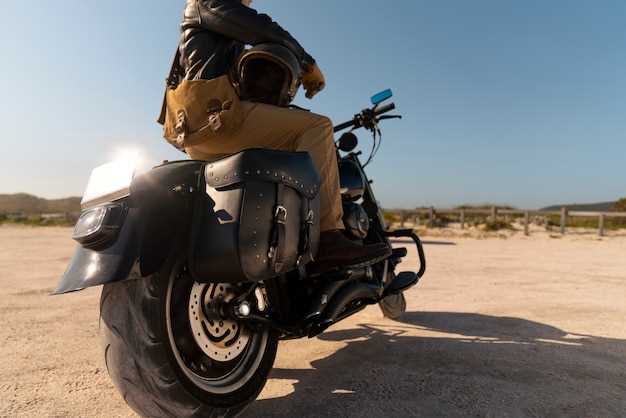
Embarking on a long motorcycle trip across state lines can be an exhilarating experience filled with stunning landscapes, diverse cultures, and the freedom of the open road. However, preparing for such a ride requires careful planning and consideration to ensure a smooth journey. Whether you’re a seasoned rider or a novice, having strategies in place can make all the difference in the success of your adventure.
One of the first things to consider when planning your trip is the route. Mapping out your ride not only helps in estimating travel time but also allows you to identify interesting stops along the way. Researching state laws regarding motorcycle travel is equally important, as regulations can vary significantly from one state to another. This knowledge can prevent unexpected fines and enhance your overall experience.
In addition to route planning and legal considerations, packing wisely for your trip is crucial. A well-equipped motorcycle ensures that you’re prepared for any situation, whether it’s a sudden change in weather or mechanical issues. Carry essential tools, a first-aid kit, and adequate clothing to enjoy a safe and comfortable ride. The right preparation makes a long trip more enjoyable and less stressful.
Preparing Your Motorcycle for Long-Distance Rides

Before embarking on a long trip, it’s essential to ensure your motorcycle is in peak condition for the road. Conducting a thorough inspection and maintenance routine can help prevent breakdowns and enhance your riding experience.
Start with the engine; check the oil level and quality. Old or low oil can lead to serious engine problems during a long journey. Replace the oil filter and oil if necessary to keep your bike running smoothly.
Next, examine the tires. Adequate tire pressure is crucial for safety and fuel efficiency. Inspect the tread depth and condition of both front and rear tires to ensure they can handle long stretches of pavement. Replace worn tires to avoid potential flats during your trip.
Don’t forget the brakes. Inspect the brake pads and discs for wear. Testing the brakes in a safe area will confirm their responsiveness, an important factor when navigating varied road conditions.
Check the lights and signals to ensure visibility. All bulbs should function correctly, as being seen is vital for safety on long trips. It’s advisable to carry spare bulbs for quick replacements on the road.
Also, review your motorcycle’s chain or belt. Lubrication and proper tension can enhance performance and longevity, so ensure it’s properly maintained before hitting the road.
Finally, prepare an emergency kit that includes basic tools, first-aid supplies, and necessary fluids. This preparation can prove invaluable during unexpected situations on a long trip.
Taking these steps ensures your motorcycle is ready for the adventure ahead, allowing you to focus on the journey rather than potential pitfalls.
Packing Smart: What to Bring on Your Road Trip
Packing effectively for a motorcycle trip across state lines is essential for both comfort and safety. Start by ensuring your motorcycle is equipped for the journey. Check your tire pressure, oil level, and brake fluid before hitting the road. Carry a basic toolkit for minor repairs and a tire repair kit, as you may encounter unexpected challenges along the way.
When it comes to clothing, prioritize layers. Weather can change rapidly on the road, so bring a mix of short and long-sleeve shirts, a waterproof jacket, and durable riding pants. Don’t forget a pair of comfortable, breathable gloves and riding boots for maximum protection and comfort during your ride.
Pack essential personal items such as a first aid kit, sunscreen, and insect repellent. A compact travel pillow and a lightweight sleeping bag can enhance your rest during overnight stops. Consider carrying a hydration system or water bottle to stay hydrated, especially on long stretches of road.
Electronics are key for navigation and entertainment. Bring a GPS device or download a navigation app on your smartphone, along with a portable charger. A pair of sturdy earplugs can help reduce wind noise, making your trip more enjoyable.
Finally, keep important documents like your driver’s license, registration, and insurance handy. A small durable backpack or saddlebags can help organize your belongings efficiently. With the right packing strategy, your road trip will be both enjoyable and hassle-free.
Navigating Different State Laws and Regulations

When embarking on a motorcycle trip across state lines, it is crucial to be aware of the varying laws and regulations that govern road use. Each state has its own set of traffic rules, helmet laws, and licensing requirements that can significantly impact your ride.
Helmet Laws: Some states mandate the use of helmets for all riders, while others have no such requirement or apply it only to certain age groups. Familiarize yourself with the helmet laws in each state you plan to visit to ensure compliance and safety.
License Requirements: Ensure that you possess a valid motorcycle license that is recognized in each state. Some states may require additional endorsements or permits, so verify your credentials before your trip.
Traffic Regulations: Pay attention to speed limits, lane use, and specific traffic signs, which can differ from one state to another. For example, some areas may allow lane splitting, while others do not. Adhering to local traffic regulations is essential for a safe and enjoyable ride.
Insurance Requirements: Insurance coverage requirements vary across states. Some may require minimum liability coverage, while others may have stricter regulations. Prior to your trip, check your insurance policy to ensure it meets the legal requirements in each state.
Parking and Use of Motorcycle Lanes: In certain cities, motorcycles are allowed to park in specific areas, which might not be the case elsewhere. Research motorcycle parking rules and designated lanes to avoid fines and ensure a hassle-free experience.
By understanding and respecting the diverse laws and regulations across states, you will enhance your motorcycle road trip experience, ensuring a smooth and enjoyable journey.

